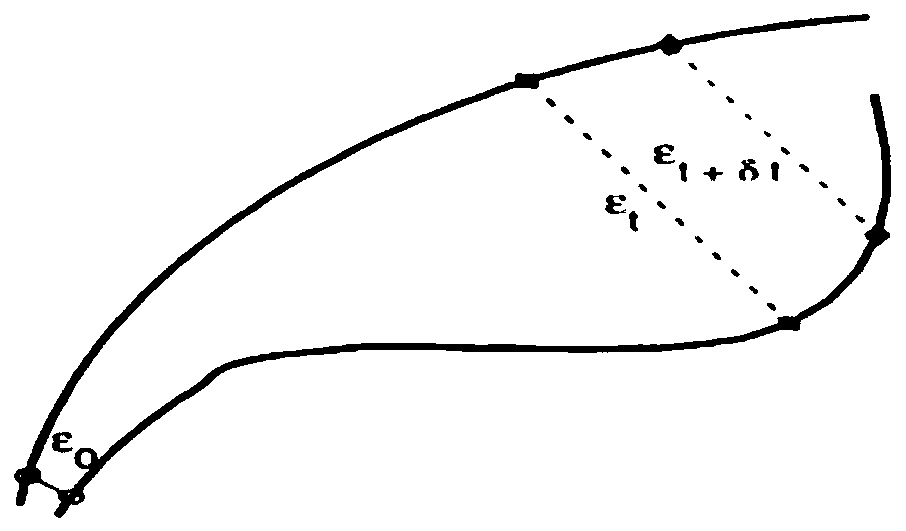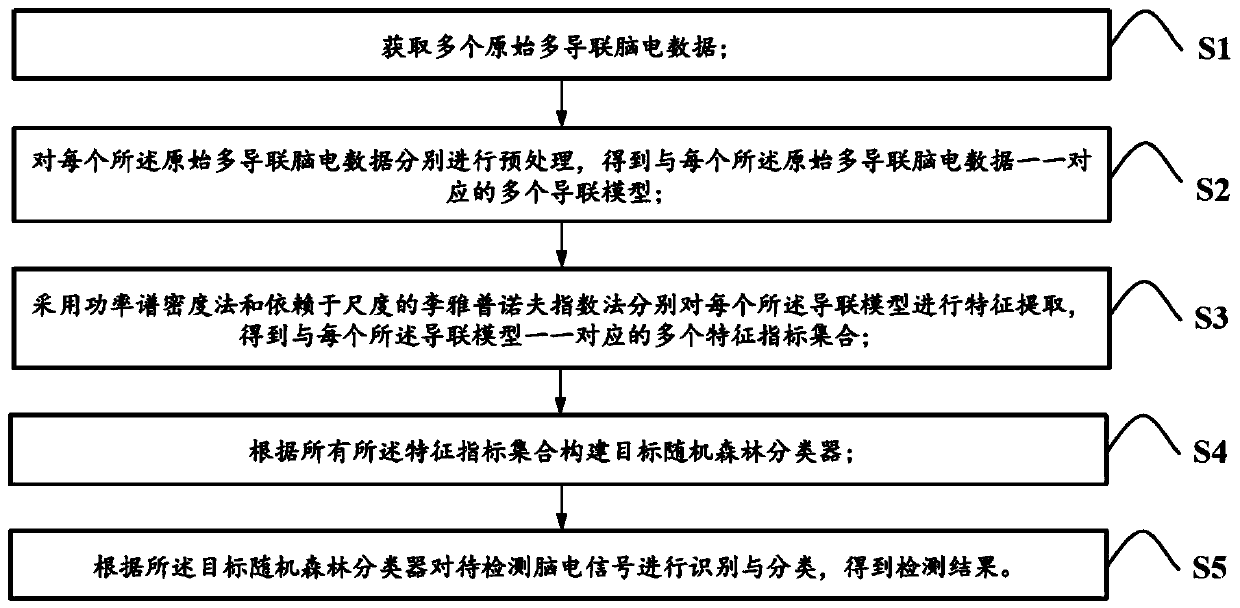Method for identifying and classifying epileptiform discharges, system, device thereof and medium
A classification method and epilepsy technology, applied in medical science, diagnostic signal processing, sensors, etc., can solve problems such as confusion, noise and chaos, and achieve high recognition and classification accuracy and high accuracy
- Summary
- Abstract
- Description
- Claims
- Application Information
AI Technical Summary
Problems solved by technology
Method used
Image
Examples
Embodiment 1
[0091] Embodiment one, as figure 2 As shown, a method for identifying and classifying epileptiform discharges, comprising the following steps:
[0092] S1: Obtain multiple original multi-lead EEG data;
[0093] S2: performing preprocessing on each of the original multi-lead EEG data respectively, to obtain a plurality of lead models corresponding to each of the original multi-lead EEG data;
[0094] S3: Using the power spectral density method and the scale-dependent Lyapunov exponent method to perform feature extraction on each of the lead models, and obtain a plurality of feature index sets corresponding to each of the lead models;
[0095] S4: Construct a target random forest classifier according to all the feature index sets;
[0096] S5: Identify and classify the EEG signal to be detected according to the target random forest classifier, and obtain a detection result.
[0097] In this embodiment, the original multi-lead EEG time will be obtained for preprocessing, so a...
Embodiment 2
[0143] Embodiment two, such as Figure 9 As shown, a recognition and classification system for epileptiform discharges, including a data acquisition module, a data processing module, a feature extraction module, a classifier building module and a recognition and classification module;
[0144] The data acquisition module is used to acquire a plurality of original multi-lead EEG data;
[0145] The data processing module is used to preprocess each of the original multi-lead EEG data, and obtain a plurality of lead models corresponding to each of the original multi-lead EEG data;
[0146] The feature extraction module is used to perform feature extraction on each of the lead models by using the power spectral density and the scale-dependent Lyapunov exponent method to obtain a plurality of one-to-one corresponding to each of the lead models. A collection of feature indicators;
[0147] The classifier construction module is used to construct a target random forest classifier acc...
Embodiment 3
[0150] Embodiment 3. Based on Embodiment 1 and Embodiment 2, this embodiment also discloses a device for identifying and classifying epileptic discharges, including a processor, a memory, and a device stored in the memory and operable on the processor. A computer program on the computer program, when the computer program runs, it realizes as image 3 The specific steps from S1 to S5 are shown.
[0151] The recognition and classification of the epileptiform discharge of the present invention can be realized by the computer program stored in the memory and run on the processor, which can make up for the deficiency of the traditional nonlinear signal processing method in the digital EEG signal analysis, and filter out the abnormal discharge. High-frequency artifacts reduce the influence of artifacts on EEG signals, make up for the confusion of chaotic noise and real chaos by traditional Lyapunov exponents, and describe the dynamics of EEG signals; using a combination of linear an...
PUM
 Login to View More
Login to View More Abstract
Description
Claims
Application Information
 Login to View More
Login to View More - R&D
- Intellectual Property
- Life Sciences
- Materials
- Tech Scout
- Unparalleled Data Quality
- Higher Quality Content
- 60% Fewer Hallucinations
Browse by: Latest US Patents, China's latest patents, Technical Efficacy Thesaurus, Application Domain, Technology Topic, Popular Technical Reports.
© 2025 PatSnap. All rights reserved.Legal|Privacy policy|Modern Slavery Act Transparency Statement|Sitemap|About US| Contact US: help@patsnap.com



